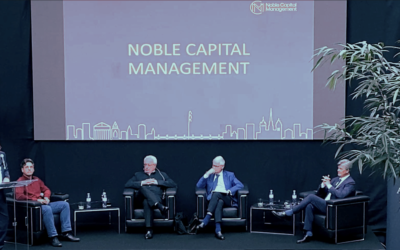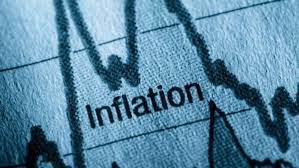News & Insights
A Major Geopolitical and Economic Transition is Underway
The world is entering a new phase of strategic rebalancing, marked by a gradual yet profound shift in the international order established since 1945. Unrivaled for much of the postwar era, the United States’ dominant position in the economic, financial, technological, and military spheres is now steadily weakening, as new powers are gaining influence. This shift is not driven by a single event, but rather by a set of underlying structural dynamics.
Actively Managed, Gold Makes a Portfolio Shine
Believing that the new president’s actions will be limited to trade and will not affect global finance, particularly the monetary system, would be naïve. Many see Trump as a fusion of Nixon and Reagan, the two major Republican figures of the past fifty years: Nixon, the anti-elitist, and Reagan, the pro-business leader. Both presidents profoundly transformed the monetary system.
Market Review – Q4 2024
2024 was a year of remarkable returns across most asset classes, treating investors to a performance well above long-term norms. Gains were widespread, and while a few pockets of losses existed—such as in long-term Treasuries, the Materials sector, and select emerging markets like Brazil and South Korea—these were the exceptions rather than the rule.
Market review – Q3 2024
The unusual leadership ranking of asset classes, whether due to the election year or a pivotal moment in Federal Reserve monetary policy, remains perplexing. The Fed’s decision to cut rates by 50 basis points, despite solid economic data, disrupted normal correlations between benchmarks. Gold emerged as the top performer, while Commodities (S&P GSCI) suffered the most. In equities, the DJIA, despite being price-weighted, generally mirrors the S&P 500’s performance. However, the S&P 500 has outpaced the DJIA by 8.5% year-to-date, largely due to non-DJIA members like Nvidia.
NCM hosts annual Global Macro event
We were thrilled to host our annual Global Macro event on September 12th in the beautiful setting of our Collonge-Bellerive premises. It was a pleasure to welcome Charles Gave, Vincent Strauss, and Didier Darcet, who shared their thought-provoking insights with our guests.
NCM nomme Michele Cocchiglia comme Responsable du développement commercial
La société de gestion genevoise Noble Capital Management (NCM) SA a nommé Michele Cocchiglia comme Responsable du développement commercial. A ce titre, il sera chargé de promouvoir les stratégies de NCM, de développer des partenariats stratégiques auprès d’une clientèle d’investisseurs qualifiés et d’apporter son expérience dans le lancement de nouveaux produits.
Market review – Q2 2024
It is highly misleading looking at equity returns in Q2 and year-to-date to conclude the investment environment was an easy ride. Indeed, market-cap weighted equity indices outperformed other asset classes in Q2.
Market review – Q1 2024
The strong momentum from the last two months of 2023 carried into 2024. The S&P 500 rose 10.2% in Q1, the best start to the year since 2019 and the 14th-best since 1926. Gains were broad-based, with all seven major MSCI country/region indices, all nine Russell style boxes, and 10 out of 11 S&P 500 sectors ending the quarter ahead of where they started.
Market review – Q4 2023
The narrative for much of 2023 was that a handful of mega-cap tech stocks were masking underlying weakness. For parts of the year, it was an accurate description. By early November, the median year-to-date return of eight broad asset classes was on pace to be negative for only the 10th time since 1972. The year-end rally changed the narrative. Not only did the S&P 500 surge 15.8% from its October 27 low into year end to bring its 2023 gain to 24.2%, but also gains were extraordinarily broad-based.
Market review – Q3 2023
After a torrid start to the year, equities pulled back in the third quarter. Not only did the S&P 500 Index post its first negative quarter since Q3 2022, all nine Russell style boxes, nine out of 11 S&P 500 sectors, and five out of seven MSCI major country/region indices fell in Q3.









